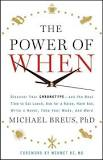Selling Dreams Through Blog Marketing

“Apple’s strategy involves selling their consumers a global package of dreams, personal experiences, and status,” explains Camila Villafañe of Postcron.com. “Apple is different from all other brands because for Steve Jobs, consumers weren’t just consumers, they were people. People with dreams, hopes, and ambitions, and he got Apple to create products to help them achieve their dreams and goals,” she says.
There’s been a lot of buzz around the “Starbucks experience” – the crackle, the aroma, the barristas – all of it. I think there’s a lesson here for blog content writers: online visitors to your blog need to find an experience along with information. “Analyze how it feels to use and buy your products, and think what you need to improve, and what you need to focus on”, Steve Jobs taught.
Each blog post needs to get readers to visualize themselves benefiting from an experience: “You won’t know how good you’ll feel until you do”, one bankruptcy attorney’s commercial says. After using your product or service, will new users feel relief? Pride? Belonging? Strength? Security? When you’re composing business blog content, I tell writers, imagine readers asking themselves – “How will I use the product (or service)?” “How will it work?” “How will I feel?”
Villafane pointed out another Steve Jobs marketing lesson: Find an enemy. “Make it clear who the enemy is, and try to get people to take a side. The idea is that people are drawn to belong to the ideology of a brand that matches their own thoughts and values,” she says. “If you don’t stand up for what you believe in, you’ll go unnoticed. And what better way to state what you believe in, than stating clearly what you DON’T believe in,” she asks?
In training new blog content writers, I always remind them of the importance of including opinion in marketing blogs. Whether it’s business-to-business blog writing or business to consumer blog writing, the blog content itself needs to use opinion to clarify what differentiates that business, that professional practice, or that organization from its peers.
Before you publish, subject each blog post to two tests:
- Is it designed to get readers to visualize themselves benefiting from an experience?
- Does it reveal what you do and don’t believe in?




 Those word “skeletons” can be use, I explained:
Those word “skeletons” can be use, I explained:
Follow us online!